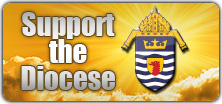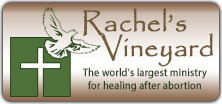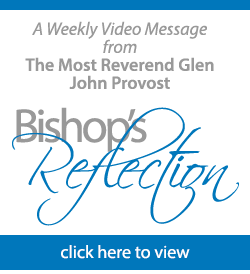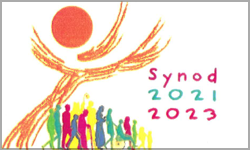Bishop Glen John Provost celebrated the Mass of Chrism with the priests of the Diocese on Wednesday, March 31. At this Mass, customarily in Holy Week, the Bishop blessed the holy oils to be used throughout the year for sacramental celebrations in the Diocese of Lake Charles. He addressed his homily to the priests and offered the following reflection:
Chrism Mass 2021
“He came to Nazareth, where he had grown up, and went according to his custom into the synagogue on the sabbath day.” Luke 4:16
The loss of taste and smell is a common experience resulting from the COVID virus. This sensation can endure for weeks or months. Things as ordinary as the morning coffee or a spicy gumbo remain unrecognizable except by color or texture. During my recovery, I tried a physician-recommended therapy, and within the week my taste and smell were returning. I recall the moment when I took a sip of coffee and tasted its roasted flavor and smelt its coco-like aroma. It was as though something were being recreated for me. An old experience, lost, had been rediscovered. If you will permit me, I suggest that we, as priests, must experience something analogous with the Mass.
The fact is that after years of repeated celebration and, especially after decades of liturgical upheaval, one can lose a grasp on some essentials or be at least tempted to discount their value. This is tragic.
In my recent reading, I came across a reflection by a lay theologian, Ryan Topping, in which he wrote: “Good liturgy is enchanted.” Enchanted comes, of course, from the word in Latin to sing, cantare. What does this mean? “When Catholics say that the world is enchanted,” Topping continued, “they mean … that creation, far from stumbling into an accidental existence, was sung into being by the voice of her maker. The world is alive by design” (Rebuilding Catholic Culture, Sophia, 2012, p. 100). Enchantment is not some dreamy, esoteric, New-Age-style submersion into an induced oblivion. Enchantment references, instead, a wonder and awe rooted in reason and a spiritual life about which popes such as Pope St. John Paul II and Pope Benedict spoke.
To say that good liturgy, above all the Eucharist, must be enchanted is to assert that the eternal finds expression in the immanent, that the present reflects a transcendent reality, and that what is celebrated manifests a Divine gift. For this to take place, an integral tradition transmits the gift through an unbroken conveyance between the giver of this reality and the present recipients. It is this very transmission about which St. Paul is profoundly aware when he writes to the Corinthians, “For I received from the Lord what I also handed on to you” (I Corinthians 11:23).
I would suggest to you that it is exactly this underpinning of a powerful tradition, the Grace of continuity, that motivates the Evangelist to describe in exact detail our Lord’s participation in the synagogue ritual. Jesus, St. Luke writes, “came to Nazareth, where he had grown up, and went according to his custom into the synagogue on the sabbath day.” The Evangelist continues, “He stood up to read and was handed a scroll of the prophet Isaiah. He unrolled the scroll,” and when he had finished reading from Isaiah, He rolled “up the scroll, he handed it back to the attendant and sat down, and the eyes of all in the synagogue looked intently at him” (Luke 4:16-17, 20). What St. Luke describes is precisely the form taken in the synagogue service. Our Lord takes a ritual moment and turns it into the proclamation of the new dispensation. Our Lord does so in one profound statement: “Today this scripture passage is fulfilled in your hearing” (Luke 4:21).
The intent of our Lord is fulfilled in every Sacrament we celebrate, for ex opere operato, the Lord is present, He speaks, He acts. For some, but not enough, this is like rediscovering a sense of taste and smell. It is an enchanting moment of encounter, where God is recreating the “world” for us in Jesus Christ, His Son.
There was a time when the promoters of what Pope Benedict XVI later called the “hermeneutic of discontinuity and rupture” would say, and still do, that the liturgy of the Mass had experienced a break in continuity. To address this error, Pope St. Paul VI offered a reiteration of the Church’s constant teaching: “[T]he Mass [as it is celebrated today] … remains… the perennial Mass. The unity between the Lord’s Supper and the sacrifice of the cross, and the re-presentation of the one and of the other in the Mass, is inviolably affirmed and celebrated…. The Mass is and remains the memorial of Christ’s Last Supper in which the Lord, transforming the bread and wine into his Body and Blood, instituted the sacrifice of the new Testament and willed that that sacrifice — through the power of his Priesthood conferred on the Apostles— be renewed in its identity, but offered in an unbloody and sacramental way, in perennial memory of him, until his final coming” (Address of a Wednesday General Audience, November 19, 1969). What Pope St. Paul VI attempted to do was make clear the invariable.
An obstacle to appreciating this constancy and continuity can be the human situation. So often we think liturgical oddities, not to mention aberrations, are an invention of our own age. This thinking is endorsed when we learn of sacrilegious behavior in a church so outrageous as to rival the worst excesses of the French and Russian Revolutions. We live in troubled times, and human nature and the Devil are still working their chaos. This is nothing new. Allow me an anecdote from history.
I came across the writings of an imperial envoy, Cardinal Aeneas Piccolomini. Traveling throughout Christian Europe on mission, he comments on the Bishop of Würzburg, who was also noble and when celebrating Mass kept a naked sword on the altar before him. The year? 1458! The fact that the good cardinal (1456), later to be elected Pope Pius II, mentions the incident is an indication that he found it odd, if not inappropriate. Just as there could be sloppiness in the celebration of the Mass in any century prior to our own, there can be utter disregard for the sacredness of the liturgical action today. It was true for the Corinthians, as for the poor Bishop of Würzburg, as in the loony liturgical escapades of the 70’s, and the sacrilegious behavior of any age. None of this makes it right. None of this gives sanction to indifference. None of this justifies a disregard for the Blessed Sacrament. Neither can we allow this behavior to distract us from what should be.
Bishop Robert Barron points out that for every Catholic we receive into the Church, six leave. We often react to this statistic by thinking that we must “modernize” the liturgy, make it more “meaningful” or “relevant.” All the while we plant this updating in the soil of trendiness that gets washed away in the flood of change. Our superficial efforts become as obsolete as bell-bottoms and paisley shirts. But do we ever question our approach to the Mass as a cause for the disaffection of the faithful? There is a strong temptation afoot to think of the liturgy today as something we “invent,” something that depends on our “creativity.” This is erroneous thinking, reflected in terminology such as “liturgical planning” or décor, “doing liturgy” or “liturgical activities.” Instead, the liturgy, as worship, is defined by what it is, not by activity, and the priest must approach that worship with faith. He is not an actor on a stage, but an essential, believing participant without whose presence the Sacrament would be impossible. It is this grounding in reality that the Church expects and the faithful seek. When they find this faith lacking, they become disillusioned and look elsewhere.
We must realize that the meaning of the Mass is found in the transcendent. It is metaphysical. The meaning finds its origin in Christ Himself, and we, acting in persona Christi, must engage with that reality. We do this with faith, a faith fed by a spiritual life and a deepening relationship with God. Like the nerve endings of an olfactory system, the mind, heart, and soul must be awakened, sensitized to the sacred moment that we are ordained to re-present. The work of the liturgy transcends us because it is Christ’s work, and it is our privilege to participate. This work is an art, sanctioned by the Church, which is Christ’s Body. In the liturgy we present what He has intended to make lasting for the salvation of mankind until all is consummated.
In conclusion, I return to that sensation of regaining taste and smell. The experience is startling because something marvelous is happening. Sheer wonder and amazement should be the experience of priests celebrating Mass. I conclude with the words of then-Cardinal Joseph Ratzinger: “The moment when the Lord comes down and transforms bread and wine to become his Body and Blood cannot fail to stun, to the very core of their being, those who participate in the Eucharist by faith and prayer. When this happens, we cannot do other than fall to our knees and greet him. The Consecration is the moment of God’s great actio in the world for us. It draws our eyes and hearts on high. For a moment the world is silent, everything is silent, and in that silence we touch the eternal — for one beat of the heart we step out of time into God’s being-with-us” (The Spirit of the Liturgy, Ignatius Press, 2000, p. 212).
















